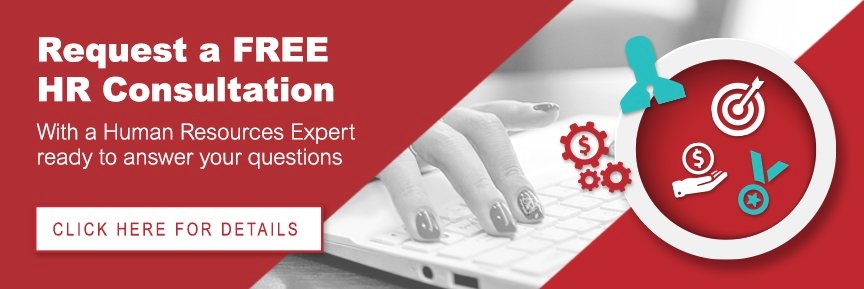TL;DR: Burnout is a workplace-wide risk that undermines morale, productivity, and retention. This guide helps business leaders spot early signs, understand root causes, and build a culture that actively prevents burnout. HR and leadership teams should take a proactive, structured approach — and PRemployer can help.
What is Burnout?
Employee burnout is chronic physical and emotional exhaustion caused by sustained stress, unrealistic demands, or feeling undervalued. It’s not a formal mental illness, but it is a mental health issue—and, if left unaddressed, it can trigger or worsen anxiety, depression, and disengagement.
Burnout often stems from pushing too hard for too long, expecting perfection, or lacking the right role fit. Employers who impose constant pressure without adequate support risk damaging morale, quality, and retention. Burnout isn't always work-related either. Caregiving duties, family stress, or health issues can compound the problem.
Fast fact: In 2019, 42% of workers reported feeling burned out. Just a few months into the pandemic, that number jumped to 72% — making burnout a major driver of the Great Resignation.
Signs of Employee Burnout at Work
Most employees won’t openly admit they’re burned out—either because they don’t realize it or fear judgment. That’s why leadership and HR must actively watch for the following warning signs.
Burnout manifests differently from person to person, but there are several common symptoms managers should learn to spot early. Addressing these signs before they escalate can prevent turnover, extended leave, or morale collapse.
1. Constant Fatigue
Chronic exhaustion is one of the most recognizable signs of burnout. Burned-out employees may appear sluggish, listless, or even fall asleep at their desks—despite insisting they get enough rest.
You may also notice them complaining about tiredness more often, relying on caffeine, or showing physical signs of sleep deprivation (e.g., dark circles, slow reaction times). Beyond the physical toll, fatigue often leads to a noticeable drop in motivation and impaired decision-making.
Even highly capable employees may seem checked out or unable to concentrate on tasks they previously handled with ease.
2. More Frequent Mistakes
A reliable employee who suddenly starts making repeated errors or struggling with familiar tasks may be experiencing cognitive overload—a classic symptom of burnout.
These mistakes might be small at first, like forgetting details or missing deadlines, but they can escalate quickly. One key indicator is when someone starts making the same mistakes over and over, or appears confused by tasks they’ve completed successfully for years.
This can reflect mental fatigue, reduced confidence, or emotional detachment from their work. It’s especially concerning when paired with declining attention to detail or increased frustration.
3. Increased Absenteeism
Burned-out employees are often absent more frequently, either for physical ailments or mental health reasons. While some may be taking legitimate sick days, others may be calling out to avoid work stress, effectively using sick days as a form of escape.
It’s also important to understand that chronic stress weakens the immune system, making employees more prone to minor illnesses like colds or migraines.
A gradual increase in sick days, tardiness, or early departures can be a subtle but reliable indicator that someone is struggling and potentially on the verge of leaving entirely.
4. Irritability or Cynicism
Uncharacteristic mood changes, especially irritability, frustration, or detachment, are common in burned-out employees. A previously cheerful team member might begin snapping at coworkers, expressing more critical or negative opinions, or acting withdrawn and difficult to approach.
They may also seem generally dissatisfied with leadership, coworkers, or even themselves. Cynicism is a particular red flag, especially when employees begin to question the value of their work or express hopelessness about future improvement.
These behaviors often stem from feeling trapped, undervalued, or powerless—and they can be contagious if left unaddressed.
5. Heightened Anxiety or Depression
Burnout can trigger or worsen mental health issues like anxiety and depression—particularly in employees already predisposed. When employees feel unsupported or overwhelmed, it can manifest as panic attacks, mood swings, loss of interest in work, or emotional breakdowns.
In some cases, individuals who were once enthusiastic may express hopelessness or seem emotionally flat. If a team member is already receiving treatment for a mental health condition, a spike in symptoms could indicate their work environment is exacerbating the issue. This is a clear signal to pause and ask what support systems are missing.
Additional cues:
Some burnout symptoms may appear subtle or unrelated to performance at first glance, but they still signal deeper concerns:
- Disengagement or apathy: A lack of enthusiasm, missed meetings, or minimal participation
- Comfort-seeking behavior: Increased snacking, stress eating, or overindulging during happy hours
- Contagious stress: When one person’s burnout spreads to others, triggering morale dips, more absences, or internal conflict
Leaders who pay close attention to these patterns—and act quickly—have the best chance of reversing burnout before it spreads.
What Causes Burnout?
Burnout is especially common in SMBs where lean teams carry heavy workloads and HR capacity is thin. Common contributors include:
- Unrealistic expectations or a lack of clear role boundaries
- Poor work-life balance modeled by leadership
- Lack of autonomy or flexibility in scheduling
- Little to no feedback, especially positive reinforcement
- Inadequate support for emotional and mental wellbeing
As a result, leaders risk losing more than productivity. High-performing team members often leave when they feel overextended and unsupported.
How to Prevent and Address Burnout
Preventing burnout requires more than good intentions — it demands consistent cultural habits, leadership modeling, and policy support. Here are actionable ways business owners and managers can help:
- Provide positive feedback regularly. Recognition boosts morale and helps employees feel seen.
- Hold consistent one-on-one check-ins. Encourage open conversations about workload.
- Set realistic expectations. When assigning work, check for bandwidth and provide help or training.
- Encourage time off. Normalize mental health days and discourage excessive overtime in non-emergency situations.
- Model work-life balance. If leadership stays late every night, employees will follow.
- Offer flexible schedules. Let employees choose start times, work remotely, or take advantage of compressed workweeks.
- Consider an Employee Assistance Program (EAP). These programs offer access to counseling and mental health resources—a smart investment in long-term retention.
Why HR Leaders Are Especially Vulnerable
Your HR and management teams are often the first line of defense against burnout — and the last to receive support. They’re tasked with managing everyone else’s needs, compliance, and culture while often handling payroll, onboarding, and benefit questions alone.
That’s where outsourcing to a PEO like PRemployer comes in.
How PRemployer Helps You Tackle Burnout
A Professional Employer Organization (PEO) like PRemployer helps businesses offload repetitive administrative tasks—freeing HR leaders and managers to focus on people, not paperwork.
Here’s how we help reduce burnout across your team:
- We handle payroll, benefits, and compliance tasks with accuracy and consistency.
- We offer expert HR guidance to help you design roles, policies, and handbooks.
- Our Risk Management and Time & Labor tools make balancing workloads and reducing stress easier.
Burnout spreads when it’s ignored, but it can be prevented when leadership prioritizes well-being.
Do you need help building a burnout-resistant culture? Let’s discuss how PRemployer can support your team and protect your business.

